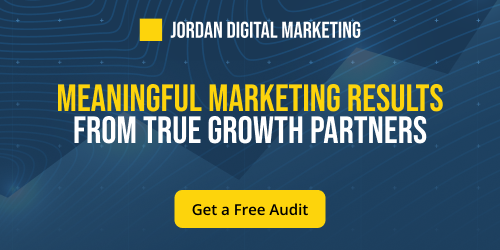Guide to Growing AI Search Visibility: What Marketers Need to Know Now
If you haven’t checked in on Microsoft Ads (a.k.a. Bing) in a while, you’re not alone—but this is your nudge to take another look.
In Q1 and Q2 of 2025, Microsoft rolled out a handful of updates that are actually making a tangible difference, especially for B2B advertisers. Between improvements to Performance Max and the full rollout of LinkedIn targeting, we’re finally getting the tools we’ve been asking for to make campaigns more efficient, targeted, and measurable.
Here’s our breakdown of what’s new, what we’re paying the most attention to, and where I’m testing next.
Our Pick for Most Impactful Update: LinkedIn Targeting + PMax Upgrades
Performance Max is getting smarter (let’s just say that as with Google’s version, there’s still room for improvement). And for B2B advertisers like us, the ability to tap into LinkedIn profile targeting natively in Microsoft Ads is a major step forward.
1. Smarter PMax with Asset-Level Metrics + Audience Insights
These are the kinds of visibility upgrades we’ve needed for a while:
- Asset-Level Metrics now show performance for individual headlines, descriptions, images, and more. This lets you optimize faster by seeing what’s working and what’s not — no more guessing or pulling data from multiple places.
- Audience Insights give you a better look at who’s interacting with your campaigns: location, devices, demographics, and custom segments.
These might seem small, but when you’re managing a portfolio of campaigns and juggling creative refreshes, this kind of intel makes optimization way easier and more strategic.
2. LinkedIn Targeting in Microsoft Ads
LinkedIn profile targeting is now, finally, fully available in all supported markets.
While I haven’t tested it yet, I’m planning to use it in upcoming B2B campaigns. Being able to layer in job title, company size, and industry is a big win for relevance. I’ll be starting with observation mode to monitor performance without narrowing my audience too quickly, just to make sure the volume is there and CPCs don’t spike too high.
What You Can and Can’t Combine Right Now
People have asked if you can combine LinkedIn targeting and PMax. As of now, the answer is no.
PMax is great for automation and cross-channel reach, but it doesn’t support LinkedIn profile layers yet. So if you’re going after high-intent B2B users using job title or industry filters, keep those strategies in separate campaigns for now.
A Few More Updates to Know About
If you’re managing Microsoft Ads for your clients or your own brand, these additional features are worth flagging:
“Why This Ad?” Transparency Tool
Like Google’s version, this dropdown helps users understand why they’re seeing an ad. It’s not a game-changer for performance, but it’s a solid win for transparency.
Local Business Tags
New visual tags like Local Business, Made in the USA, Free Shipping, and Deal could improve CTRs for ecomm brands. These are still in testing but could be a nice lever soon.
Some users are now seeing 7+ ads per query, which could impact CPCs and push organic listings further down. Worth watching if you’re running blended SEO + paid strategies.
Consent Mode Will Be Required by May 5
If you haven’t already, make sure your UET or Universal Pixel is sending proper consent signals. Microsoft is cracking down on this starting May 5.
Our Recommendations for What to Test
If you're ready to jump back into Microsoft Ads, here’s where I’d start:
- Test LinkedIn Profile Targeting in Search or Audience Campaigns
→ Start with observation mode to validate performance before fully layering in targeting - Launch a PMax Campaign
→ With Audience Insights and Asset-Level Metrics now live, it’s a great time to see how PMax performs with better visibility - Optimize Based on Asset-Level Data
→ Run creative refreshes faster using performance data, not just gut feel - Stay on Top of Consent Mode Compliance
→ Get ahead of the May 5 enforcement deadline to avoid disruptions
Bottom line: Microsoft Ads is finally giving advertisers more control, better data, and tools that feel more built for how we actually run campaigns. Especially if you’re B2B, now’s a great time to start testing.
If you want help planning your first LinkedIn-powered campaign or optimizing PMax, let’s talk—we’re already testing some of this for our clients and would love to compare notes.
Tags:

Apr 29, 2025 7:30:00 AM


.png?width=500&height=500&name=Regular%20Blog%20Hero%20(14).png)
.png?width=500&height=500&name=Regular%20Blog%20Hero%20(13).png)
-2.png?width=500&height=500&name=Regular%20Blog%20Hero%20(12)-2.png)